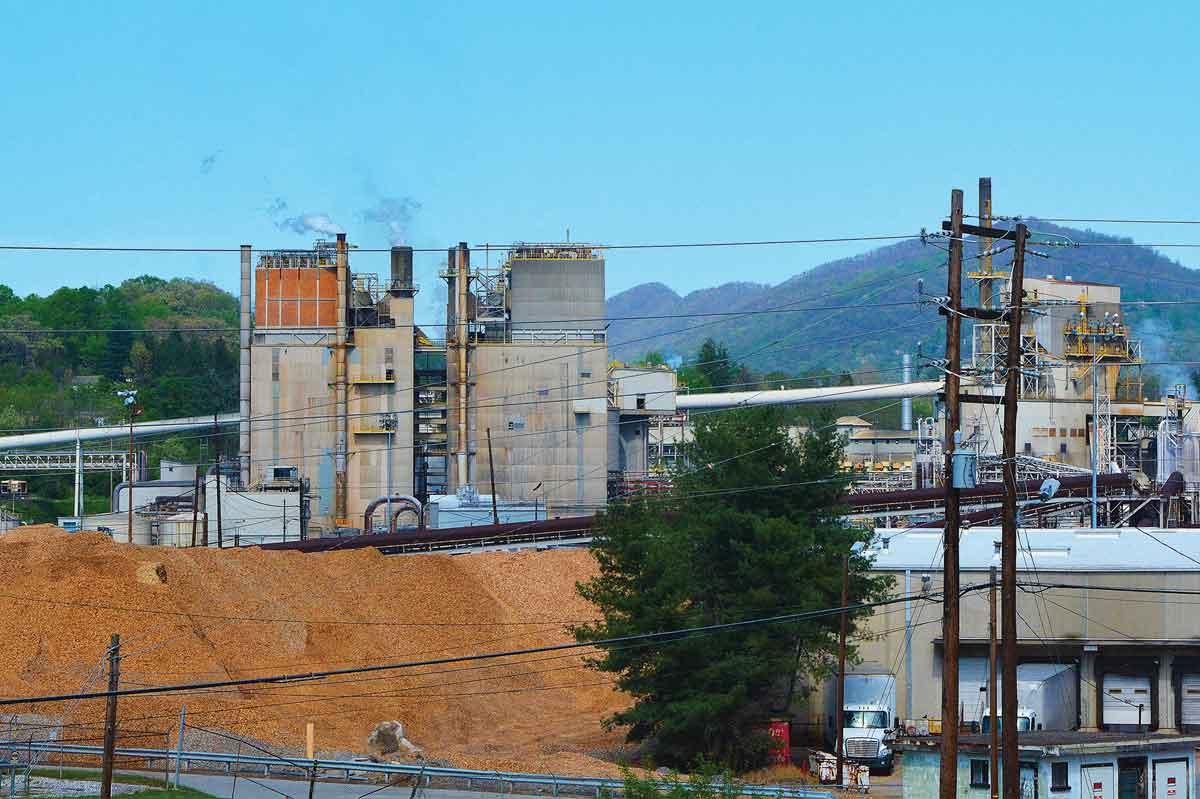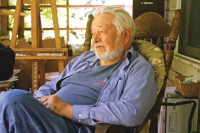Pactiv Evergreen contests chemical dumping allegations

In response to a July 10 notice of violation accusing Pactiv Evergreen of illegally dumping unused chemicals into the wastewater treatment plant at its now-shuttered Canton paper mill, the company has submitted a letter stating that it acted “on a good faith belief” and that the discharge was legal.
“Importantly, the discharge of the cleaning solution and sanitizer to the WWTP [wastewater treatment plant] during the shutdown, both of which were properly discharged to and treated at the WWTP when used in the normal operation of the mill, did not harm the beneficial bacteria or upset the aerobic treatment processes at the WWTP,” the letter states.
The notice of violation had stemmed from a complaint that the N.C. Department of Environmental Quality’s Division of Water Resources received Wednesday, June 5 — three days before the mill shut down for good — alleging that Pactiv Evergreen was illegally disposing of sodium hydroxide solution and calcium hypochlorite. The complaint, which was referenced in the notice but not attached, was accompanied by a photo appearing to show hoses connecting a pair of stacked chemical totes to a floor drain.
In its response, Pactiv Evergreen states that the chemicals in question included 300-600 gallons of a cleaning solution containing 10-15% sodium hydroxide, also called caustic soda or lye, and 6,028 gallons of a sanitizer containing 12.5-15.6% sodium hypochlorite, which is commonly mixed with water to form household bleach. The company told DWR that the discharge did not have an adverse impact on the wastewater treatment process and, by extension, on the quality of the water released into the Pigeon River.
The mill said it is not aware of any calcium hypochlorite being disposed of in this manner and that it is not aware of third-party contractors disposing of any “raw, unused or virgin materials” through the wastewater treatment system.
Related Items
The mill’s letter said that during normal mill operations prior to the shutdown, the cleaning solution would be applied to cloth on different areas of the paper machines, rinsed off and drained to the sewer system, in accordance with the wastewater discharge permit. When the mill began shutdown operations, it returned six unopened totes of the sodium hydroxide-containing cleaning solution to the vendor, but the vendor would not accept the three open, partially empty totes. The mill disposed of these totes through its wastewater treatment system. During the same timeframe, higher than normal discharges of the papermaking byproduct known as black liquor were coming from mill equipment as a result of the shutdown, so pH levels of the waste entering the plant were being monitored carefully.
“The WWTP did not observe any spikes in pH beyond the anticipated spikes associated with the black liquor discharges,” the letter states. “Further, the WWTP complied with all monitored parameters during this period, and no violation of water quality standards was detected.”
The 6,028 gallons of sodium hypochlorite-containing sanitizing solution put through the wastewater treatment system was the remainder in an 8,550-gallon tank at the time of the shutdown. The solution was “slowly drained” to the sewer system and wastewater treatment plant over a 24-hour period starting 10 a.m. May 30, the letter reads.
The sodium hypochlorite contained in the solution reacts with organic matter in the wastewater treatment system, so if it were being released in concentrations that would damage the system, a spike in pH would have been observed, reads the mill’s letter. The letter argues that due to the slow discharge rate and high concentration of organic material in the sewer at the time, “we strongly believe that any NaOCl in the sanitizer would have been fully consumed in the sewer before reaching the WWTP.”
“In any case, there was no damage to the beneficial bacteria in the WWTP during this period, and no violation of water quality standards was detected,” it says.
While the more than 6,000 gallons of chemicals estimated to have been released is a significant volume equivalent to more than 90 standard bathtubs, it’s small compared to the more than 18 million gallons of wastewater the plant was processing daily at that time. The mill estimates that the concentration of the sodium hypochlorite solution, by far the more voluminous of the two substances, would have been less than 0.01% at the time of the discharge.
“This concentration of NaOCL [bleaching agent], which we note is commonly used to treat undesirable pathogens in sewer and wastewater treatment operations, would have no adverse impact on the beneficial bacteria at the WWTP,” the letter states
Luke Etchison, the western region aquatic wildlife diversity coordinator for the N.C. Wildlife Resources Commission’s Inland Fisheries Division, said he did not receive any reports of fish kills around the time the chemicals were dumped. However, he noted that there are many stretches of the Pigeon River that are not readily visible to the public.
The July 10 NOV states that, in a meeting with staff at the paper mill shortly after the shutdown was announced, DWR staff “specifically stated that the dumping, disposal or discharge of unused or virgin chemical products or materials into the NPDES permitted wastewater system is prohibited.” However, Pactiv Evergreen said it did not believe the materials in question to be “virgin chemical products” but rather “process chemicals … analogous to remaining black liquor following the shutdown of the pulping and recovery processes.”
After receiving an email from DWR on June 6 asking about the discharges, the mill responded within an hour. Five minutes later, the mill’s response letter states, DWR replied with a message thanking the mill for its response and saying that there were “no further comments or questions at this time.” However, the following day, the DWR sent a new email saying that the discharge could be a violation of the mill’s wastewater discharge permit.
“While Blue Ridge Paper continues to believe that the discharge … was permitted under the NPDES permit as part of the shutdown operation, given DWR’s position, Blue Ridge Paper has not discharged cleaning solution or sanitizer since receipt of your Wednesday, July 7 email,” the letter states.
In its July 10 NOV, the DWR wrote that Pactiv Evergreen had violated three water quality laws and could be charged a civil penalty assessment of up to $25,000 per day, per violation. In its response, Pactiv Evergreen contested all three alleged violations, restating its belief that the discharge was covered under the permit and reiterating that it stopped discharging the chemicals once it knew that DWR did not consider that to be a covered action.
Since May 2021, the company has received 14 notices of violation from various divisions within the DEQ. Thus far, it has paid $41,819 in penalties levied as a result. Officials with DWR will now consider the mill’s response and decide what happens next.









